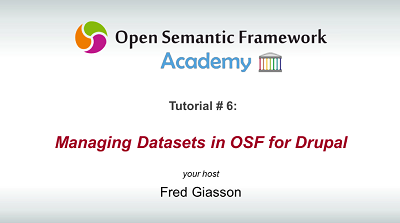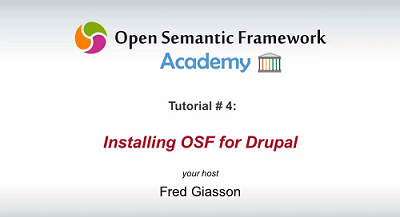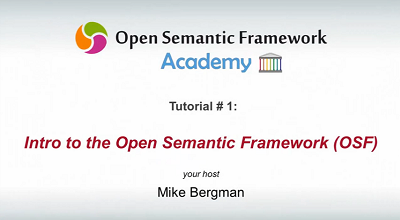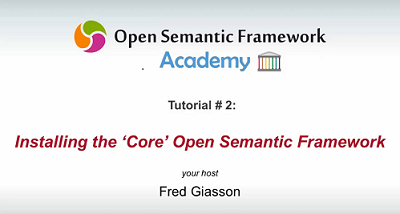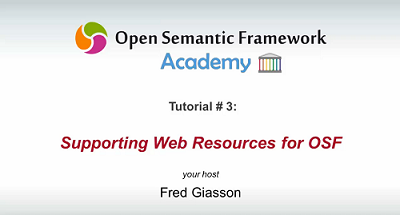This screencast introduces you to one of the most important OSF for Drupal connector: the OSF Entities module. This module creates a new Entity Type called Resource. The description of these entities is managed directly into the Open Semantic Framework (OSF). All the calls to the core entity API function like: entity_load(), entity_save(), entity_create() and entity_delete() are operated with different calls to different OSF web service endpoints.
What this means for a Drupal developer is that they can use Drupal’s Entity API to manage instance records that are hosted remotely in a OSF instance. They don’t have to know how OSF works in order to take advantage of it. They just have to use the API they are used to use. This new Entity Type supports the following Drupal features:
- Full Entity API
- Entities caching
- Revisioning
- SearchAPI
- Templates selection with inference on their type
- 29 field widgets
- Export feature in 6 formats
The screencast introduces you to the following aspects of the OSF Entities module:
- Introduction to the architecture of the OSF Entities module
- Exposing the available entities in OSF into Drupal Bundles and Fields
- Browsing and searching for
Resourceentities - Managing Resource Type bundles
- Introduction to the
OSF Entity Referencefield widget - Creating and updating
Resourceentities

